Are you looking to get your old record player up and running again? Has it spent too long in the dusty dark of your garage? Does it need to see the light one last time? Do you need to take it out for one last ride?
Well, climb aboard, as we take a trip along a safari that will cover all of the necessities you need to know in order to get your old record player up and running again.
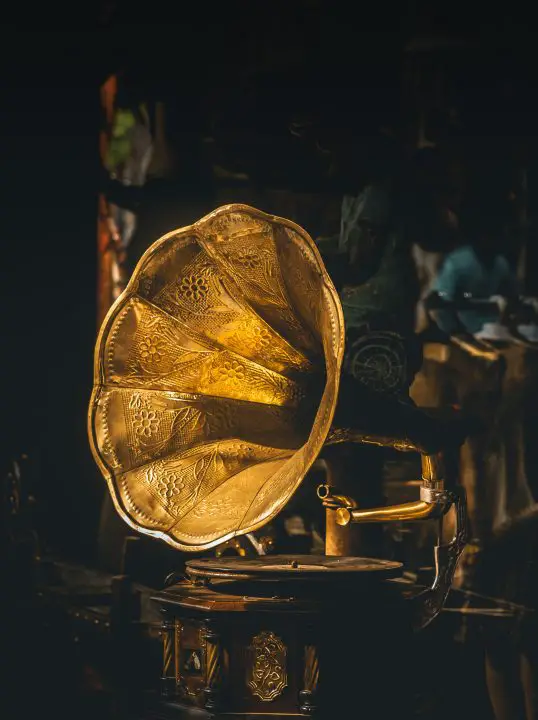
Table of Contents
Vintage vs Modern
Despite what you might have heard otherwise, an old vinyl record player is not all that much different from a newer one, at least not in terms of the basic parts of a turntable. Technology simply has not changed very much in the past several centuries, perhaps because no one really wants to take it anywhere else. Most collectors of vinyl records and owners of record players don’t really want anything new or fancy. The appeal is largely in how outdated the medium is.
Looking at the number of similarities between a vintage record player and a modern record player is striking:
- All turntables will inherently have a connection to amplification of any kind, whether that be onward to an external preamp, an amplifier, or straight into a set of speakers. How else are you going to hear the sound, after all?
- Every turntable needs to use a cartridge in order to play music through a sound system. The cartridge is the central interpreter of the signals that are pressed into the record’s grooves, sending them forth into the world.
- All turntables operate within the field of time. Time is really the defining factor of music as an art form, something that many minimalist and experimental composers have been trying to rally against for a long time, e.g. La Monte Young (with his Theater of Eternal Music) and John Cage.
- In this way, every turntable will feature a tonearm that bears a cartridge, though this should not be confused with stating that all tonearms are the same, for they are very much not.
- Finally, just as all turntables need to be amplified, they all need a speaker of some kind in order to make themselves heard, whether this be a sound system or a pair of headphones.
The Differences
There are, however, a few key differences to make note of between older and more modern turntables:
- Vintage turntables are less likely to have a grounded power supply. As technology has advanced, it has come to prioritize the safety of the customers and users of the products in question. A modern turntable is inherently bound to be more safe than an older turntable as there are all sorts of guidelines in place for assembling electrical products that simply weren’t around in the last century.
- When using vintage models of turntables you should be especially careful when going anywhere near the plug. The old two-pronged power supplies on older turntables are not as safe as the newer three-pronged style. Thomas Edison would surely be turning out electrical signals in his grave…
- The components within vintage turntables are also made differently and built to last in a different way, whether or not you are inclined to listen to a vinyl album loudly or quietly. While a new turntable has components that might last longer than those in an old turntable, the parts in an older turntable were easier to replace at the time as this was seen as far more common and acceptable. This was a time when people actually kept their belongings for a considerable amount of time when things were built to last.
- There are even some extremely old forms of turntables that can’t play modern types of records, something that will no doubt encroach on your listening experience in a big way. Phonographs, for example, cannot play modern records as they were built and designed to play records that were much smaller and played at much higher speeds (and even made from different materials like shellac). Ensure your turntable is compatible with playing newer records before you get in too deep.
Amplification
So, as already alluded to above, any turntable that has the intention to send its sound forth into the world will need to be amplified. The pure electrical signal that comes from the phono cartridge also needs to be amplified by a preamp before it can even be sent to an actual amplifier.
Thankfully, many modern turntables, like the Audio-Technica AT-LP60 (see below), for instance, feature a built-in preamp that is decent enough to get the job done. This is where audiophiles inherently spread their wings and start customizing things for their own masturbatory pleasure.
Heck, there are even some types of speakers that come with a preamp built-in. These are called active speakers, a type of powered speaker that needs to be powered in order to provide preamplification. Most speakers, though, are passive, meaning they don’t have to be powered in order to work. Rather, they simply act as pure conduits of the sound.
If you are unsure whether or not your turntable has a built-in preamp, there is thankfully an easy enough way to check. If you have already checked around the back and can’t see a switch, you can always hook up your turntable to a pair of passive speakers. If there is a preamp, then you will be able to hear a sound, though otherwise, you can be sure that there is no preamp if there is no sound. It is more common for an older turntable to need an external preamp.
Cartridges
The cartridge is one of the most important components on a turntable, if not the most important, as it is one of the few parts that actually comes into contact with the record itself, alongside the platter. Unlike the platter, however, the cartridge will physically meet the grooves, interpreting the sensitive vibrational data pressed within them into a phono signal that can then be preamplified to a proper level before being sent forth to an amplifier and then to some speakers.
Using a cartridge that is subpar can have an effect on the whole listening experience, affecting the hard work of the rest of the components and turning their efforts into mush. A cartridge like this cannot be trusted to properly surf the grooves of a record without eliciting noise and distortion. No, if your vintage record player has a cartridge that wants to play like this, then it would be wise to move on and replace this cartridge with something that wants to play nicely.
Indeed, many of the issues that you might be having with a record player (and this goes for any record player whether it be old or new) might easily be solved by replacing or otherwise reconsidering the cartridge. If you are really happy with the rest of your turntable, why replace the entire vessel when you could just change over some of the more important components to ones that are more ready and willing to do a better job?
Changing the preamp and cartridge with this mindset is one of the best things you can do for your stereo setup, especially if you already have a great amplifier and set of speakers.
Old Records
Just as you should take great care when dealing with a vintage turntable, you ought also to take a similar amount of care when handling vintage records.
Indeed, if it is your attention to fill your record collection with a bunch of old records, then it would be best to prepare yourself for some issues that come along with this enterprise, no matter how many newer records you have to balance it all out.
Having lived an inherently longer life than newer records, these older records have no doubt either incurred more damage or otherwise been around longer for it to have been more likely that they would have acquired some wear. This is especially the case if the previous owner didn’t treat them with much respect and didn’t know how to go about properly storing records.
Clearly, the more damage a record incurs, the more difficult it is to restore. Sure, you can bring a warped record back from the edge of extinction, but how well will it play afterward? Some records are simply too far gone to even consider saving to the point that the tried and tested methods of yesteryear simply don’t even make a dent.
Two things to consider, then, are that you should: a) ensure that you are storing your records properly and b) make sure that you are handling the records properly when you are using them – it can be all too easy to scratch them up in usage. As long as you look after your records, they can last for a long time.
Final Tones
So, there you have it! Hopefully, you are now feeling ready and able to get your old record player up and running again!
FAQs Old Record Player
What is an old record player called?
At least for the past 50 or so years, a record player has been called a record player. However, you are probably asking this question to get at what record players were originally called during their very inception. The closest yet earliest thing to the kinds of record players that we know today would be the gramophone which was invented by Emile Berliner in the last years of the 19th century. This was an adaptation of the phonograph invented by Thomas Edison which Berliner thought he could better.
Are vintage record players worth money?
This will depend on what kind of vintage record players you are talking about. Being one of the most important inventions of the 19th and 20th centuries, this was, like the radio, mass-produced to within an inch of its life. So, unless you are talking about a particularly rare record player that has otherwise managed to evade staying alive all this time, the chances are that it won’t fetch all that much if put up for sale. That being said, there are plenty of exceptions to this rule and the only way you will be able to tell whether yours is worth anything is to get digging.
What is an antique record player in a crossword?
Though there were a number of different iterations of the record player in its evolution, there were only a couple that are really remembered today. Thus, it is likely that the antique record player that you are searching for within the confines of a crossword is either a gramophone (as invented by Emile Berliner) or the phonograph (as invented by Thomas Edison). The names of these inventors might come in useful in a later crossword if you are often partial to these sorts of games.
Are Victrola record players good?
In short, no. Most Victrola players are simply not constructed with the same care and attention that slightly more expensive turntables are made with. In a certain sense, it feels as though they are not meant to be good. Rather, they are simply meant to do the bare minimum to make a certain audience of users feel as though they are living some nostalgic aesthetic for a moment before discarding it. Most all-in-one record players are inherently not that good, but they serve a purpose in allowing those who can’t or won’t build their own stereo setup to experience the thrill of listening to vinyl records.
What is an antique music player called?
Many think that the first musical reproduction inventions were either the phonograph or the gramophone, though this isn’t necessarily the case. Rather, the first was the phonautograph invented by Édouard-Léon Scott de Martinville on March 25th 1857. Intending to make a device that replicated the function of the human ear in tracking the photographing of a word in the mind, he invented this device which used a stylus to trace figures scratched into lampblack. In this way, the earliest known surviving recording of a human voice is someone singing ‘Au Clair de la Lune’ on this device. Though this wasn’t the first instance of recorded sound per se, it was the first that was taken seriously by the scientific community, paving the way for a whole new world of scientific acoustics.



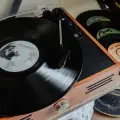

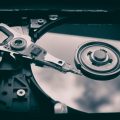
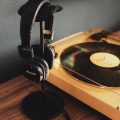
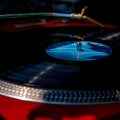
This is great information. I guess I never appreciated how live records sound compared to CDs and digital music in general. Oh my gosh these old records sound so beautiful!
My mother is almost 96 years old and we are enjoying all of her old records on my symphonic player from the 80’s.I gave this to her 30 years ago and she still uses it!
However we bought her a new Carrie Underwood Christmas record and it will not play. Is there anything we can do in order to hear this record on her turntable?
Thank you very much,
Mary Elizabeth
Dear Mary Elizabeth,
Thank you for sharing your experience with enjoying the timeless beauty of vinyl records. It’s wonderful to hear that your mother, at the impressive age of 96, is still relishing the music from her collection on a symphonic player from the 1980s. Vinyl records indeed have a unique charm that digital formats often struggle to replicate.
Regarding the issue with the new Carrie Underwood Christmas record, it’s not uncommon for older turntables to have compatibility issues with modern vinyl records. Here are a few steps you can consider to resolve this:
Check the Record Size and Speed: Ensure that the record size (12-inch, 10-inch, 7-inch) and speed (33 1/3 RPM, 45 RPM, 78 RPM) are compatible with your mother’s turntable. Modern records are typically 33 1/3 RPM, but some special editions might differ.
Inspect and Clean the Stylus (Needle): Over time, the stylus can accumulate dust or wear down, affecting its ability to read newer records. Carefully cleaning the stylus or replacing it if it’s worn out can make a significant difference.
Adjust the Tracking Force and Anti-Skate Settings: If your turntable allows for these adjustments, ensure they are set correctly. Incorrect settings can prevent the stylus from properly tracking the grooves of a new record.
Look at the Cartridge Compatibility: Some older turntables might have a cartridge that’s not compatible with modern vinyl pressings. Consider upgrading the cartridge to a more modern one that can handle new records.
Examine the Turntable’s Belt (if applicable): For belt-driven turntables, an old or stretched belt can affect playback. Replacing the belt might improve the turntable’s performance.
Ensure Proper Alignment: The cartridge alignment on your turntable could be off, especially if it hasn’t been adjusted in a while. Misalignment can lead to playback issues.
Check for Mechanical Issues: Sometimes, older players might have mechanical wear and tear that impacts their ability to play new records. A professional inspection might be necessary.
Remember, the charm of vintage audio equipment often comes with the need for a bit more care and maintenance. If these steps don’t resolve the issue, consulting a professional who specializes in vintage audio equipment might provide a solution.
I hope this helps,
Robert